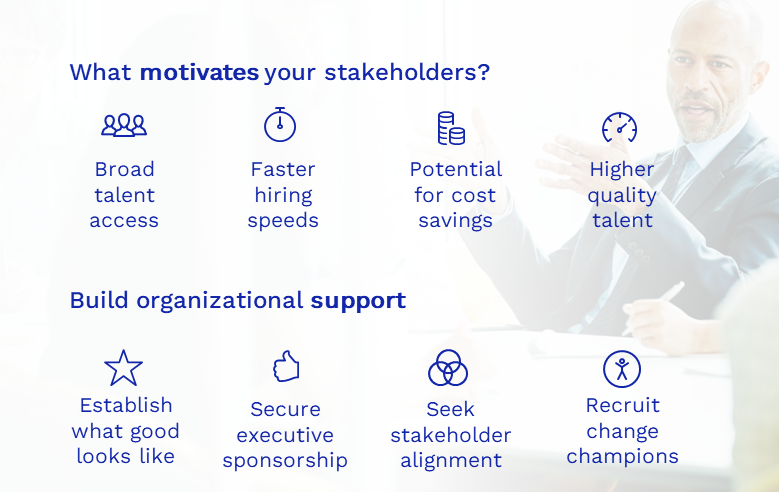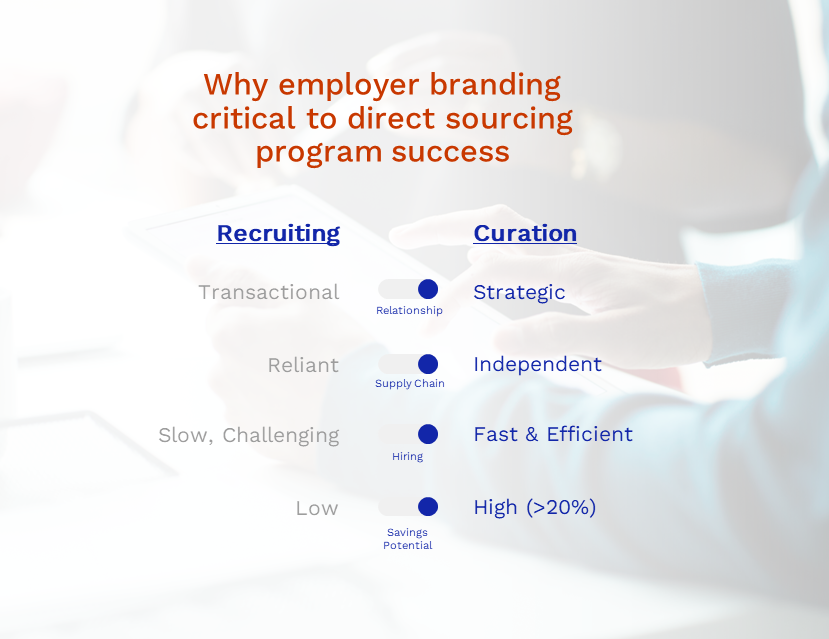Top 5 Considerations for Direct Sourcing Readiness
John Poore | December 5 2022

In my role as General Manager of Direct Sourcing here at Magnit, one of the benefits is getting the opportunity to speak with our customers, prospective customers, and thought leaders about the future of direct sourcing as an extended workforce solution.
Having spent 10+ years collaborating with clients on building successful contingent workforce programs, I’ve gotten plenty of exposure from different creative philosophies, maturing operations models, and new data sets. And one of the questions I get asked the most often is, “What do companies have to do to launch a successful direct sourcing program?” It may come as no surprise that there are several key performance indicators (KPIs) the best-performing direct sourcing programs address consistently.
In this blog post, I’m going to discuss the most frequently asked questions I receive about direct sourcing and the five related KPIs for a successful direct sourcing program, including goals, teams, data, communication strategies, and employer branding.
Let’s take a look at each and get you rolling on the path to direct sourcing success:
1. What should the goals for my direct sourcing program look like?
I am often told that a top priority for direct sourcing programs is lowering costs. And while I agree, there are many other (and even more important) benefits to think about. In my experience, top performing programs are very intentional with their goals. Frequently, the focus on direct sourcing program goals is on building talent communities first, then letting the number of positions filled and dollars saved be the trailing KPIs for their success. (Read more on setting up a strategic, goal-driven direct sourcing program.)
The important takeaway here is to make sure that you have specific goals and measurement philosophies in place through the lens of all stakeholders across the organization.
2. Who should be on my direct sourcing team?
Direct sourcing programs that regularly achieve and exceed their goals leverage key stakeholders from across the business. Direct sourcing is a relatively new concept that has recently started focusing on leveraging a company’s talent brand to drive extended workforce talent acquisition.
This means that a number of different stakeholders need to be involved in establishing a branded direct sourcing program. They often include teams such as:
- Talent Acquisition
- Legal
- Human Resources
- Marketing
- Procurement/Strategic Sourcing
I recommend engaging power users who are likely to work directly with the program. In doing this, it’s also important to ensure that the program’s value proposition is delivered across all stakeholders, and everyone is given an opportunity to participate in program governance as needed.

3. What type of data should I use in my direct sourcing program?
I’m often asked about how data should be consumed when designing a direct sourcing program. As I mentioned above, having specific, intentional goals for a direct sourcing program is paramount to success – and nothing informs strategies to develop better than program data.
Data will tell you where direct sourcing will have early success and where additional attention will be focused for long term success.
Understanding time to fill, requisitions distribution, location and pay data, and many other key data points will significantly separate the programs with specific and meaningful goals from those that don’t and underwhelm the end customer. Be sure to consider cross-industry comparable data, geographical comparison, and how the extended labor market is trending as a whole.
4. How do I approach communication and change management in direct sourcing?
I could probably write an entire post about how important communication and change management are in adding any new sourcing channel to an organization. Direct sourcing is no different. However, because of its broad impact across the organization, it’s important to have a strategy for communication to stakeholders and other interested parties.
Successful direct sourcing programs adhere to a regular governance and planning (QBR) cadence. Have a plan to articulate the overarching value proposition of direct sourcing and be ready with messaging that resonates through individual lenses.
Beyond the talent community participants, the most impacted groups are likely to be power users and staffing partners. In addition, we increasingly see executive participation as a KPI for success - which is no surprise given the cost savings impact and the role of the extended workforce in reaching crucial organizational milestones.
My personal approach to change management is to be transparent and direct:
- With heavy program users, this means understanding their use case in detail, including their timelines and expected outcomes.
- For supplier partners, it’s important to share the goals for the program, the results against program goals, and engage them as needed.
While direct sourcing is an incredibly valuable part of any extended workforce ecosystem, staffing suppliers are critical partners to engage and retain for success.
5. Why is branding important to direct sourcing?
Simply stated, if you’re not proactively and publicly using your employer brand, you don’t have a direct sourcing program. It’s no secret that there is some prospective sourcing of talent to grow and mature talent communities. However, large percentages of talent community participants will engage with your program because of your employer brand. Beyond helping to drive a successful direct sourcing program, branding is also critical to the retention of program participants and should drive your candidate referral engine as well.
Some organizations choose to use a partner to represent their brand versus doing it in-house. Allowing a partner to represent your employer brand requires tremendous trust and a commitment to partnership, governance, and communication, and in my experience, such programs thrive very early in the program maturity curve.
In fact, I recently reviewed a data set from one of our top performing direct sourcing customers which showed that companies that provide extended workforce job links externally with their brand prominently displayed saw 40% more candidate applications compared to those that did not. Whether going in-house or going to a partner, enhancing and strategically using employer branding is crucial to direct sourcing success.

There are many ways to design direct sourcing programs to achieve specific goals while delivering the unique on-brand talent experience for every organization, but the basic foundations of successful programs are nearly universal. While the above isn’t intended to be a comprehensive guide to creating a direct sourcing program, I hope sharing what I’ve observed over the years of working with thought leaders and clients will help others prepare themselves for their own direct sourcing success.
To learn about the importance of a data-driven, integrated direct sourcing solution, read our white paper.
If you’re interested in learning more about how Magnit is helping organizations implement winning contingent workforce programs globally, please contact a Magnit representative at info@magnitglobal.com.
Disclaimer: The content in this blog post is for informational purposes only and cannot be construed as specific legal advice or as a substitute for legal advice. The blog post reflects the opinion of Magnit and is not to be construed as legal solutions and positions. Contact an attorney for specific advice and guidance for specific issues or questions.
